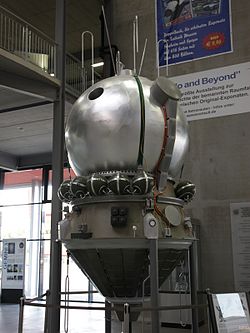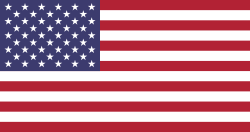SpX-DM2
| SpX-DM2 | |||
 | |||
| Statistik för uppdraget | |||
|---|---|---|---|
| NSSDC-ID | 2020-033A[1] | ||
| Modell | Dragon 2 | ||
| Beställare | NASA | ||
| Operatör | SpaceX | ||
| Farkostens namn | Endeavour | ||
| Anrop | Endeavour | ||
| Varaktighet | 63 dag, 23 tim 25 min | ||
| Uppskjutning | |||
| Raket | Falcon 9 Block 5 | ||
| Uppskjutningsramp | Kennedy LC-39A | ||
| Uppskjutning | 30 maj 2020, 19:22:45 UTC | ||
| Landning | |||
| Landning | 2 augusti 2020, 18:48:06 UTC | ||
| Landningsplats | Mexikanska golfen | ||
| Omloppsbana | |||
| Varv runt jorden | 1 024 st | ||
| Grader | 51,6° | ||
| Dockning | |||
| Rymdstation | ISS | ||
| Dockning | 31 maj 2020, 14:29 UTC[2] | ||
| Port | PMA-2/IDA-2 (Harmony, fram) | ||
| Ur dockning | 1 augusti 2020, 23:35 UTC | ||
| Tid dockad | 63 dag, 9 tim, 8 min | ||
| Besättning | |||
| Befälhavare | Doug Hurley | ||
| Pilot | Bob Behnken | ||
| Kronologi | |||
| |||
SpX-DM2 är uppdragsbeteckningen för den första bemannade rymdfärden för SpaceXs Dragon 2-rymdfarkoster. Uppskjutningen genomfördes den 30 maj 2020 efter ett tidigare misslyckat försök. Farkosten lyfte från Launch Complex-39A vid Kennedy Space Center som planerat vid 19:22:45 UTC. Flygningens destination var den Internationella rymdstationen (ISS). Farkosten anlände till ISS efter ungefär 19 timmar.
Uppskjutningen sändes live via YouTube med slogan "Launch America".
Efter dockningen deltog de båda besättningsmännen i Expedition 63s arbete ombord på rymdstationen.
Den 1 augusti 2020 lämnade man rymdstationen och förberedde för landning den 2 augusti 2020.
Farkosten återinträdde i jordens atmosfär och landade i Mexikanska golfen utanför Panama City, Florida den 2 augusti 2020.
Första försöket för uppskjutningen
Ett försök att skjuta upp farkosten genomfördes den 27 maj 2020. Farkosten var planerad att lämna ramp 39A vid 20:33 UTC. Vid drygt 17 minuter före uppskjutningen avbröts försöket på grund av att tre väderregler bröts.
Besättning
| Befälhavare | Hans tredje rymdfärd |
|---|---|
| Flygingenjör 1 | Hans tredje rymdfärd |
Se även
Källor
- ^ ”NASA Space Science Data Coordinated Archive” (på engelska). NASA. https://nssdc.gsfc.nasa.gov/nmc/spacecraft/display.action?id=2020-033A. Läst 2 juni 2020.
- ^ ”International Space Station Welcomes First SpaceX Crew Dragon with NASA Astronauts” (på engelska). NASA. 31 maj 2020. Arkiverad från originalet den 5 januari 2022. https://web.archive.org/web/20220105052330/https://www.nasa.gov/feature/international-space-station-welcomes-first-spacex-crew-dragon-with-nasa-astronauts/. Läst 3 juni 2020.
| ||||||||||||||||||||||||||||||||||||||||||||||||||||||||
| |||||||||||||||||||||||||||||||
| ||||||||||||||||||||||||||||||||
Media som används på denna webbplats
Författare/Upphovsman: SpaceX, Licens: CC0
This artist's concept shows a SpaceX Crew Dragon docking with the International Space Station as it will during a mission for NASA's Commercial Crew Program. NASA is partnering with Boeing and SpaceX to build a new generation of human-rated spacecraft capable of taking astronauts to the station and expanding research opportunities in orbit.
Författare/Upphovsman: Space Exploration Technologies Corp., Licens: CC0
The 2018 version of the Big Falcon Rocket at stage separation: Starship (foreground) and Super Heavy (background)
Författare/Upphovsman: Pascal (Flickr user: pasukaru76), Licens: CC0
Vostok spacecraft replica at the Technik Museum Speyer, Germany.
In this illustration, a SpaceX Crew Dragon spacecraft approaches the International Space Station for docking. NASA is partnering with Boeing and SpaceX to build a new generation of human-rated spacecraft capable of taking astronauts to the station and expanding research opportunities in orbit. SpaceX's upcoming Demo-1 flight test is part of NASA’s Commercial Crew Transportation Capability contract with the goal of returning human spaceflight launch capabilities to the United States.
U.S. Air Force 45th Space Wing embroidered patch for SpaceX's Crew Dragon Demonstration Mission-1 (DM-1)
Backdropped by a blue and white Earth, this close-up view features the Soyuz TMA-6 spacecraft approaching the International Space Station (ISS). Onboard the spacecraft are cosmonaut Sergei K. Krikalev, Expedition 11 commander representing Russia's Federal Space Agency; astronaut John L. Phillips, NASA ISS science officer and flight engineer; and European Space Agency (ESA) astronaut Roberto Vittori of Italy. The Soyuz linked to the Pirs Docking Compartment at 9:20 p.m. (CDT) on April 16, 2005 as the two spacecraft flew over eastern Asia. The docking followed Friday’s launch from the Baikonur Cosmodrome in Kazakhstan.
Rotated and color enhanced version of original (ISS013-E-48788 (6 July 2006) --- The Space Shuttle Discovery approaches the International Space Station for docking but before the link-up occurred, the orbiter went through a series of inspection photos by station crew to inspect the vehicle for any damage to its Thermal Protection System. This was known as the Rendezvous Pitch Maneuver and was implemented after the Columbia Disaster in 2003. The Leonardo Multipurpose Logistics Module can be seen in the shuttle's cargo bay. Discovery docked at the station's Pressurized Mating Adapter 2 at 9:52 a.m. CDT, July 6, 2006.)













